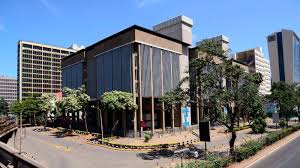he Central Bank of Kenya (CBK) has announced plans to raise KSh 50 billion through the reopening of two infrastructure bonds to support the country’s growing financial needs. The move is part of efforts by the Kenyan government to fund its KSh 4.24 trillion (about N32 trillion) national budget for the 2025/2026 fiscal year, without relying heavily on introducing new taxes that could upset the public.
According to CBK, the reopened bonds include a 6.5-year bond and a 17-year infrastructure bond, both of which were initially issued in 2023. The bank is using a method called a “tap sale,” which means it is reopening previously issued bonds instead of introducing new ones. This approach is often cheaper and faster and is expected to attract both domestic and international investors. The infrastructure bonds are also tax-free, which makes them more appealing to long-term institutional investors such as pension funds and insurance companies.
The Central Bank has used this strategy in the past, and financial experts believe the current economic situation makes it a timely option. In February 2025, the CBK bought back three maturing bonds in its first-ever bond repurchase programme. These included three-year, five-year, and nine-year papers. That buyback raised KSh 50.8 billion, slightly above the target, and helped the government avoid near-term debt repayments worth KSh 135 billion. Now, by reissuing infrastructure bonds, the CBK is trying to raise fresh funds and push more responsibility onto long-term investors.
Kenya is currently facing a major budget deficit of about KSh 876 billion. To cover this shortfall, the government plans to borrow KSh 592 billion locally and another KSh 284 billion from foreign lenders. The government dropped plans to introduce new taxes after widespread public protests in 2024. As a result, using tools like bond reopenings has become necessary to finance ongoing projects and meet daily expenses.
However, some market analysts have warned that too many bond reopenings could reduce investor interest, especially if yields drop or if the bonds become too common. There are also concerns that relying too much on domestic borrowing could limit the government’s ability to explore other funding options in the future.
Despite these concerns, CBK officials believe that Kenya’s bond market has grown more stable. Many of the country’s institutional investors, like pension managers and insurers, are expected to support the bond offer. Past reopenings have shown strong interest from these groups, and the tax-free nature of infrastructure bonds is a strong incentive.
The Central Bank also believes that the KSh 50 billion from this round of bonds can help reduce the need for extra spending proposals during the budget year. In recent years, Kenya has had to pass mid-year supplementary budgets to fill revenue gaps. With public debt already standing at 66 percent of GDP — higher than the recommended 55 percent — financial experts say there is little room for new debt that is not carefully planned.
They are also urging the CBK and Kenya’s Treasury to combine borrowing with broader reforms. This includes improving tax collection, attracting a wider range of investors, and strengthening the domestic debt market. If the government borrows too much from within, it could end up crowding out private businesses that also rely on loans to grow.
In the end, the reopening of these bonds is a smart move aimed at solving a short-term problem, but it must be managed well. If subscription levels are high, it could become a model for future budget support. But if investors lose interest, the government might be forced to rethink how it raises money.
Kenyan lawmakers and economic stakeholders are now watching closely to see how the market responds to the bond reopening. The success or failure of this move could shape how Kenya plans future borrowing, especially as the country continues to deal with high debt, low revenue, and pressure to maintain public services.
